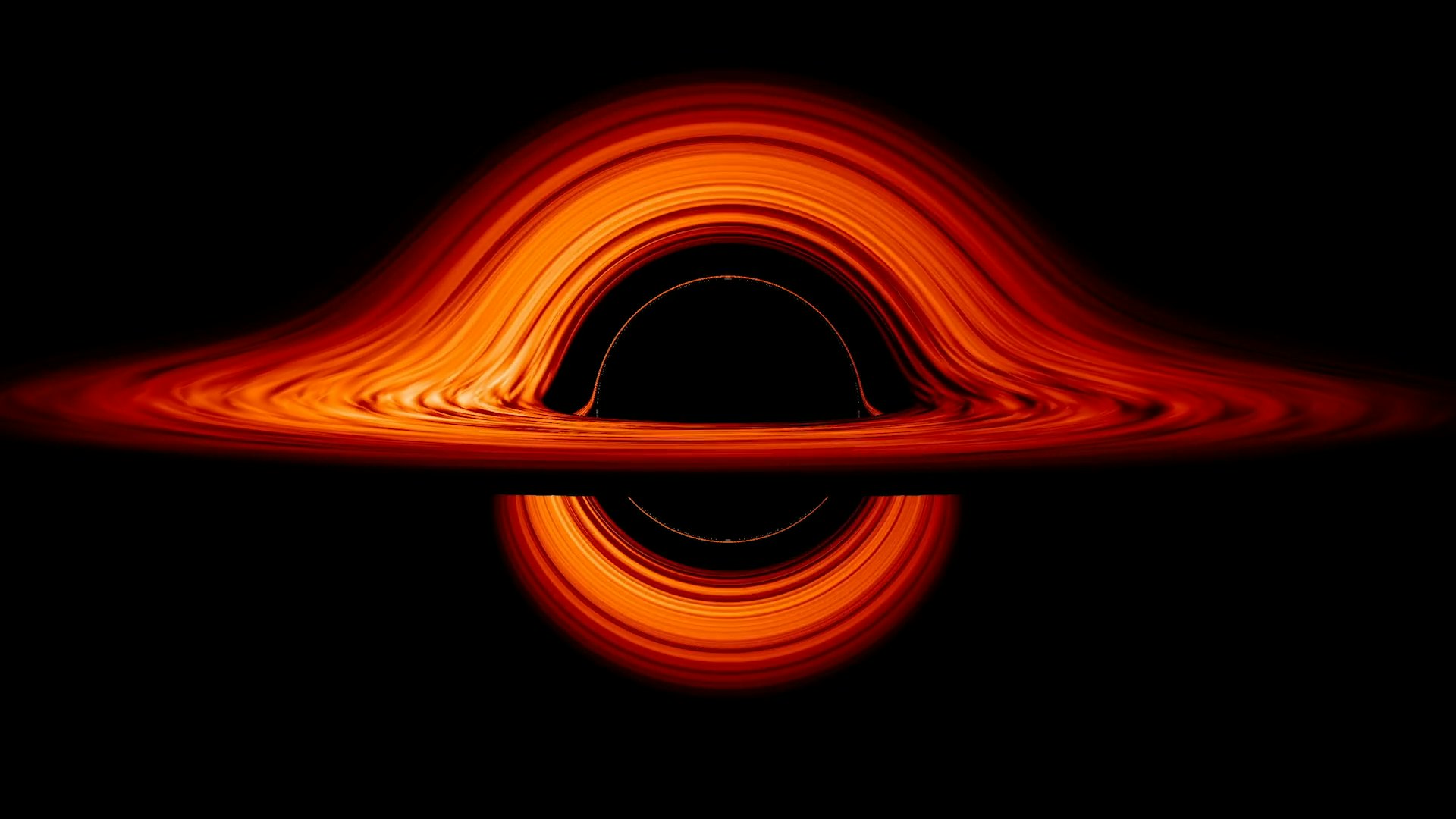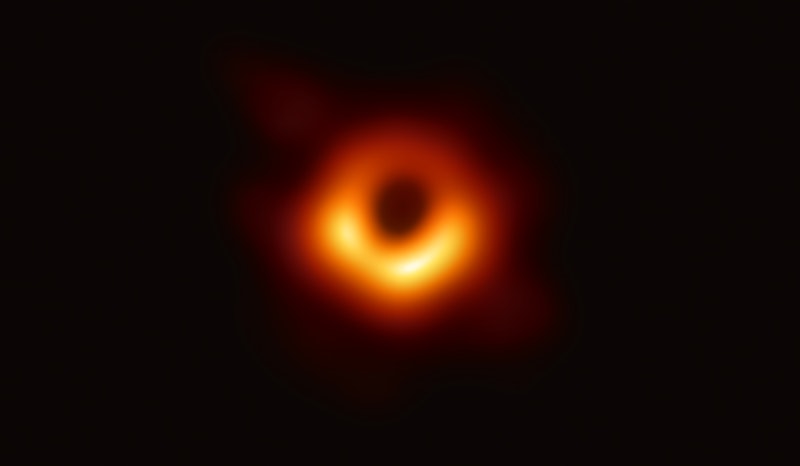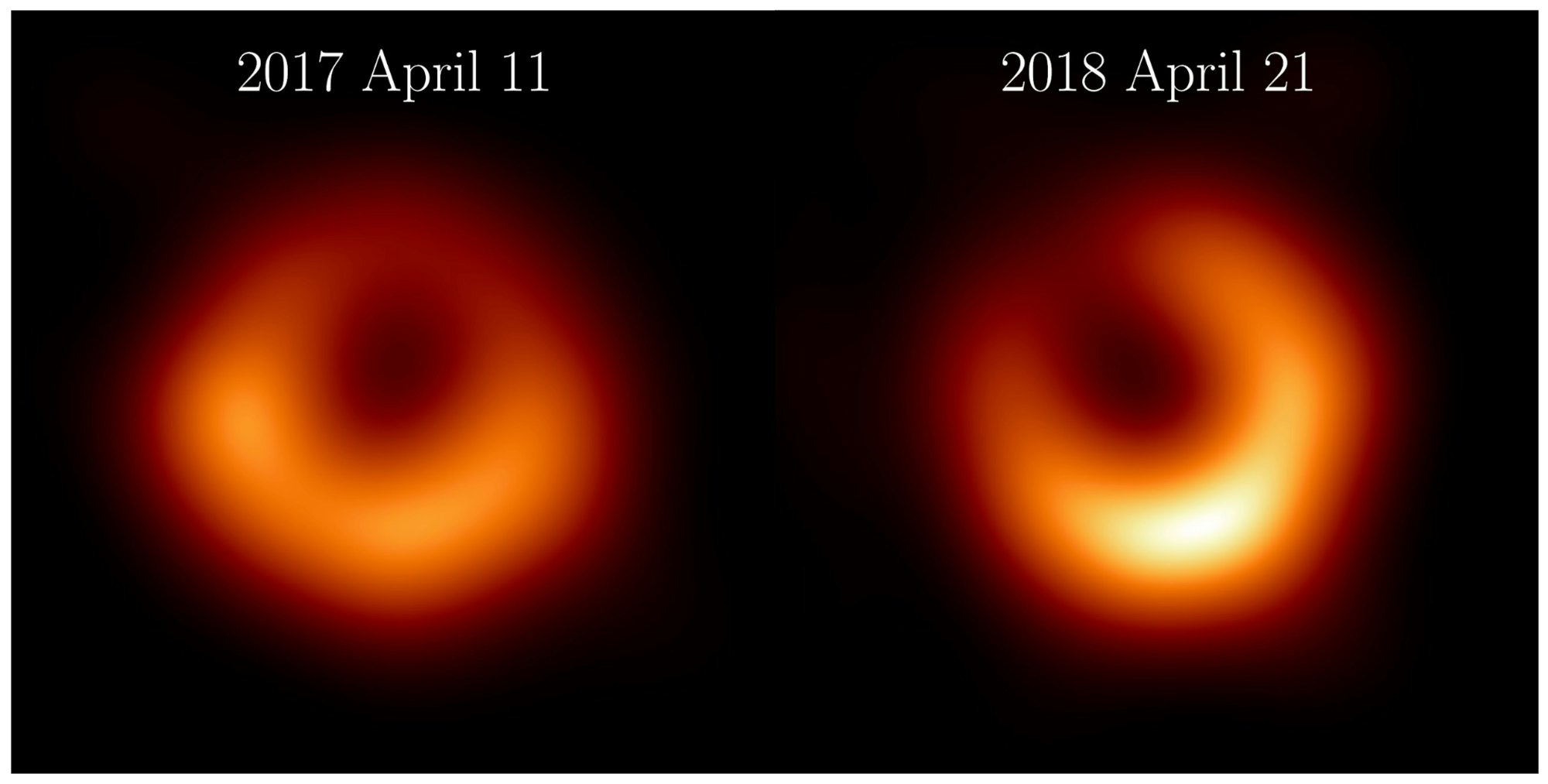
The next generation Event Horizon Telescope (ngEHT) — an array of worldwide radio telescopes that converge to create an Earth-sized virtual telescope — is working on creating the first ever moving image of a black hole.
“We want to make dynamical, moving, living, breathing, movies of black holes,” ngEHT leader Shep Doeleman tells Inverse. In 2019, the EHT team, which includes hundreds of “black belt engineers” (as Doeleman describes them), published the first-ever image of a black hole — a snapshot of the churning supermassive black hole called M87*. Three years later, in 2022, EHT photographed another supermassive black hole, this one at the heart of our own Milky Way Galaxy.
Now, researchers want to take this imaging one step farther, by creating a movie of a black hole. This week, researchers working on EHT announced that the network of telescopes can now observe a new higher frequency off 345 gigahertz (GHz), making black hole movie making “within our grasp by the end of this decade,” Doeleman says.
Inverse spoke with Doeleman about the challenges ahead, and why “black hole cinema” matters.
This interview has been edited for length and clarity.

If you were to create a video of a black hole, which one would you choose and why?
We chose M87* for the first black hole image because it doesn't change much visually during one night of observing. That’s because it's huge. The black hole is six and a half billion solar masses. Sagittarius A* (Sgr A*), the four million solar mass black hole at the center of the Milky Way Galaxy, is comparatively tiny. Its diminutive size means it revolves a thousand times more rapidly and changes appearance while we're trying to take its picture. So that's a problem.
But ultimately we want to film both. While M87* is a better candidate that doesn't mean we don't want to film Sgr A* eventually.
How do you take a video of a black hole?
For M87*, we would do it this way: Every three days, which is about how long you have to wait to see a little movement in M87*, we would take a picture of it. Then we would create a timelapse video of these images., which would likely take about three months. If it all works out, we would be able to see orbits of material around that supermassive black hole.
Will we ever be able to take a video of Sgr A*?
For Sgr A*, we'd only have to wait one night. In one evening, you'd see many orbits of matter and light around the black hole. But for that to work, the EHT would need a lot more telescopes. Because Sgr A* changes so quickly, we would have to position them in just the right locations to ensure we could take an image every five minutes.
This week, the EHT team confirmed that the telescope network is capable of obtaining imagery at this higher frequency of 345 GHz. How will this assist the black hole movie making?
We're kinda geeking out over this.
For scientists, this helps us understand the physics, and also Einstein's gravity predictions of what happens very close to the black hole.
If you want to capture the crazy dynamics of Sgr A*, then you really have to observe the black hole [in both frequencies] simultaneously. Sgr A*, for example, changes so quickly that you wouldn’t have a chance to switch between those two frequencies and still make the same image. Having two frequencies doubles the number of data points. That gives us higher angular resolution.
But if you’re going to a frequency like 345 GHz, everything becomes more difficult. The atmosphere absorbs more of the radio waves. Your receivers become noisier. Everything is stacked against you. One of the ways that we overcome this is to observe two, or even three, frequencies simultaneously. You can use the detections at the lower frequency and correct some of the data at the higher frequency.
Having two frequencies also shows that we can make multi-color images of these objects. We are also able to tease apart different effects around the black hole, like the activity near the event horizon versus the jets emanating away from the black hole. The black hole in certain areas will look very different at the different frequencies, but right around the event horizon, it might look very similar.
To clarify, these colors would be false colors, right? It's giving information to the viewer, but it's not the color you would see if you were that close to a black hole.
Exactly right. What we’re observing from these black holes is radio waves. Now, it's still light. It's part of the electromagnetic spectrum but certainly we would not be able to see it with our eyes. We could listen to it with a radio and we'd hear different pitches, different tones. But we couldn't see them with our eyes. They’re only sensitive to a small, slender sliver of the electromagnetic spectrum.
Having those two radio frequencies is, in effect, a way for us to see, through false color, the black hole.

What’s your ultimate goal for this project?
Right now EHT is running tests with dual frequencies. We hope to roll out some of this new capability over the next couple of years. The ngEHT project, specifically, is aimed at making new sites capable of observing three frequencies. Looking at three frequencies together really will wind up giving you true color vision when it comes to black holes, and distinguishing different kinds of activity.
What will this higher frequency reveal?
EHT is getting us as close to the event horizon — the boundary beyond which not even light can escape the black hole’s immense gravity — as we are ever likely to come as humans. We’re just about there. We’ll never really see the event horizon, because of course light cannot escape it, but if we can observe its shadow and the ring of light around the black hole, that gets us as close as we can possibly come.
Now, the way that the 345 GHz is going to take the next step, is that we can start to test Einstein’s theory of gravity in greater detail. We can look for deviations from Einstein’s theory, closer to the event horizon. We’ll also be able to see how the black hole drives outflows, like the jets that stream out of M87*, in greater detail.
Will this be the final word on event horizons and black holes? I don’t think so. But that’s really the joy of it. We’re taking it one step at a time.
Imagine if you could see matter orbiting the black hole. That’s a completely different test of Einstein’s gravity and it will tell us a lot about the spin of the black hole, the inclination of the black hole, how the black hole is oriented towards our line of sight. Who knows what else we may see when we get this new perspective.
When, as far as you can tell, may we see the first movie of a black hole?
That is the big question.
It will be a slow progression, for sure, however, I think we will have high-definition, knock-your-socks-off movies of black holes by the end of this decade.
How does that make you feel?
You know, after we made the first image of black holes, I thought nothing will really top this. Now that I’ve seen the promise of black hole cinema, I’m excited as ever.







